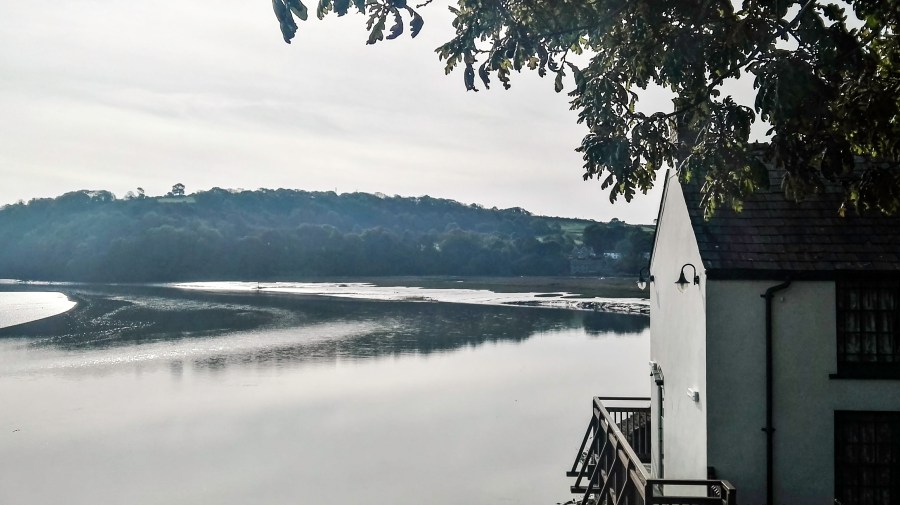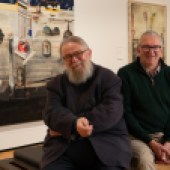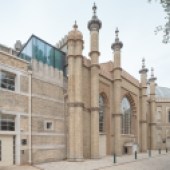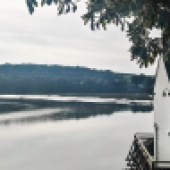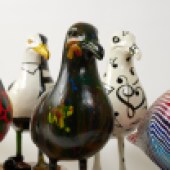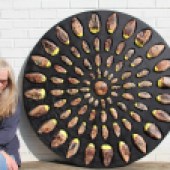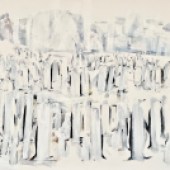Su Carroll rounds up the very best activities to try and top coastal things to do in January.
1. POET REMEMBERED

Scotland’s winter celebrations kick off with Christmas and Hogmanay and move towards Burns Night on January 25 which marks the birthday in 1759 of Robert Burns, Scotland’s national bard. He is regarded as one of the pioneers of the Romantic movement, but also become a figurehead for socialism.
Burns Night is packed with traditions – guests are welcomed by a piper, Burns’ own poem The Address To A Haggis is read to welcome the highlight of the meal served with neeps and tatties (swede and potatoes). A wee dram will be consumed and there is usually plenty of singing and dancing.
In Edinburgh city centre Rose Street is the centre of events with many free events to celebrate the life and work of this great storyteller. visitscotland.com
LOCALS LOVE
Holyrood Park has a history that dates back as far as 5000BC and there are still Iron Age forts and Bronze Age agricultural relics to be explored. Visit St Anthony’s Chapel, a medieval ruin, or explore the estate which has royal links dating back a thousand years. The high point, if you’ll pardon the pun, is Arthur’s Seat on the remains of a volcano. It’s worth the 251m climb to enjoy the 360 degree view of Edinburgh and the Lothians. Top tip – take a picnic. historicenvironment.scot
2. RESTORATION SUCCESS
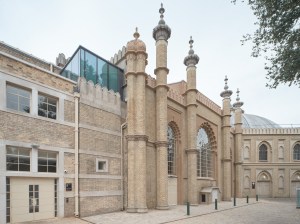
After a six-year refurbishment, Brighton Dome’s historic Grade I and Grade II listed Corn Exchange and Studio Theatre have re-opened for live performances. The project included substantial restoration and upgrades to both venues, while still conserving vital heritage features for future generations and improving the visitor experience and facilities for artists and audiences alike.
Brighton Dome’s rich history spans more than 200 years. The main Concert Hall and Corn Exchange were originally commissioned as a stable block and riding house by the Prince Regent in 1803, while the Studio Theatre was first built as a supper room during architect Robert Atkinson’s Art Deco refurbishment of the venue in the 1930s.
There has been painstaking efforts to preserve the beauty and legacy of these historic buildings while paying attention to detail to reduce energy consumption, create more efficient and cleaner operations in the building and reduce water usage and wastage. There will be improved access and a more enjoyable experience for visitors.
You can see the Castalian String Quartet at the Corn Exchange on January 21 with a programme that includes work by Bartok and Janáček. See the whole programme online at brightondome.org.
LOCALS LOVE
Move along now, nothing to see here…actually there is lots to see in the Old Police Cells in the basement of Brighton Town Hall. The museum covers 200 years of Sussex policing and includes original graffiti from the 1964 clash of Mods and Rockers on the seafront and a model relating to the bombing of the Grand Hotel. Hear the story of Chief Constable Henry Solomon who was murdered in the cells in 1844. Free but must be booked in advance. oldpolicecellsmuseum.com
3. PICTURE PERFECT

Exceptional images which capture fascinating animal behaviour, spectacular species and the breathtaking diversity of the natural world can be seen in the Wildlife Photographer of the Year Exhibition at the Museum of Scotland in Edinburgh. Using photography’s unique emotive power to engage and inspire audiences, the images shine a light on stories and species around the world and encourage a future of advocating for the planet.
The competition has been showcasing some of the best photography talent from around the world for nearly 60 years. This year’s competition attracted an astounding 49,957 entries from photographers of all ages and experience levels from 95 countries. The exhibition is on loan from the Natural History Museum. January 20-May 6. nms.ac.uk
LOCALS LOVE
There’s lots to see at the National Museum of Scotland – including a T Rex skeleton and cloning pioneer Dolly the Sheep – but people often miss the best exhibit of all: the city itself. Take the lift to the seventh floor and emerge on the roof terrace for amazing views of Edinburgh. See the city’s seven hills, Edinburgh Castle, the New Town and the Firth of Forth. The good news is that admission to the museum is free! vms.ac.uk
4. LOST AND FOUND
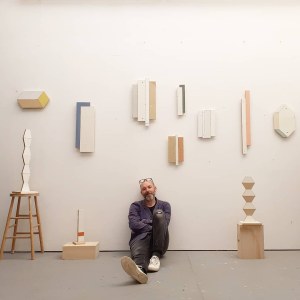
Artist Roland Hicks has transformed two galleries at Hastings Contemporary combining aspects of drawing, painting, still-life, geometric abstraction, collage and performance with sculpture. Working directly on sea-facing walls, he is creating the illusion of a flimsy patchwork of found materials, as if someone with rudimentary carpentry skills had hastily assembled a barrier out of whatever came to hand, inviting visitors to interpret the result as they see it themselves.
Some onlookers may see the work, The Fourth Wall, as a comment on the need for ‘make do and mend’ resourcefulness during the cost of living crisis, or a critique on consumerism and wastefulness.
“The Fourth Wall refers both to the literal description of the number of walls in each room, as well as the theatrical tradition of breaking the illusionary fourth wall between a stage and an audience,” Roland explains. “All illusionistic art involves some kind of deception. These walls will effectively be built from misinformation and misdirection.”
There are three new totemic sculptural artworks which appear to be made out of discarded planks from the distinctive fishermen’s net stores on Hastings’ Stade, beside the gallery. Ends on March 3. hastingscontemporary.org
LOCALS LOVE
The Old Hastings Preservation Society is devoted to marking the town’s historic past and offers regular guided walks to discover The Stade Fishing Quarter and the Old Town. You can also visit Hastings Fishermen’s Museum in a former church which was built on the beach in 1854 to serve the local fishing community. It opened in 1956 next to the famous black net huts.
Exhibits include the Edward and Mary which, in 1919, became the first locally-built fishing boat to be installed with an engine, and The Valiant, which was built in Newhaven in 1953 and worked from Hastings until 1999. You’ll also find model ships and boats, fishing gear, historic paintings and photographs illustrating the Hastings fishing industry. ohps.org.uk
5. TURNING POINT
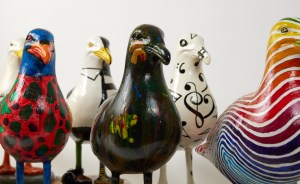
An exhibition at the John Hansard Gallery, Standing on the Edge, is showcasing artwork from the criminal justice system co-curated by learners from HM Prison Isle of Wight. Every piece of art, music and writing was made by someone in a prison, young offender institution or secure hospital, or under supervision in the community, and entered into the 2023 Koestler Awards for arts in criminal justice.
The exhibition has 80 pieces chosen from more than 1,000 submitted to the prison arts charity from the South West and Hampshire. While the group’s primary focus lay beyond depictions of prison life, with works evoking memories and hopes for the future, it was still important to them to show the everyday reality of prison.
Some of the artworks feature oranges, pinks and blues – colours that evoke sunsets and the seaside and ground the exhibition on the south coast. Sculptures of seagulls by inmates at HM Prison Channings Wood in Devon (pictured) are dotted around the space, recalling the constant squawks that soundtracked curating sessions at the prison and are a feature of daily life for the learners.
A smaller number of artworks reflect the difficulties faced by many prisoners and the resulting impact on their mental health. The title of the exhibition, Standing on the Edge, was chosen from a drawing in the show, and reflects this duality of the exhibition. The co-curators want visitors to the exhibition to leave with a sense of hope. The gallery is part of the University of Southampton. Until January 13. jhg.art
LOCALS LOVE
Southampton has a shiny, modern, city centre but you can still find evidence of the old medieval trading town. A way-marked trail just over a mile long, Walk the Southampton Walls, passes 13 towers, six city gates, and half a mile of thick stone walls and arcades. Most of it dates back to the 1360s and were the first structures in Britain built to accommodate the newly available defensive technologies of gunpowder and cannon. visitsouthampton.co.uk
6. CALL SIGNS

The 40-year history of the mobile phone is celebrated with a new exhibition at PK Porthcurno, the Museum of Global Communications, in Cornwall. Going Mobile explores the amazing journey of this everyday communication device from an exclusive status symbol, used mainly for voice calls, to a minicomputer in our pockets.
There are over 70 phones and objects selected from the Mobile Phone Museum’s extraordinary collection of over 2,700 unique devices which ranges from the earliest ‘brick’ devices of the 1980s, through flip phones, sliders, and clamshells, to the latest smartphones. This will be the first time that the phones have been on public display as a collection.
The exhibition traces the development of mobile phone communications and its roots in the history of cable and wireless technology, dating back to the 1840s. With a combination of photos, objects, illustrations, and animations, it explains the evolution of the ‘generations’, how a mobile phone call works, and the timeline of mobile milestones.
Importantly it also explores the role of the mobile phone industry in social, economic, and environmental questions and how the mobile phone has become, for many of us, not just a way of connecting with others but an extension of ourselves.
Ends in October. pkporthcurno.com
LOCALS LOVE
The beach at Porthcurno is overlooked by the amazing Minack Theatre, perched on the coast above. Brought up in a genteel Edwardian family, Rowena Cade was inspired to transform a Cornish cliff-face into an open-air arena, much of it literally built with her own hands. Each year, there are over 200 live performances at the Minack, including plays, musicals, opera, music and children’s events. There are over a million visitors a year, not just for shows but to see the extraordinary auditorium and the beautiful gardens. minack.com
7. VANISHING POINT
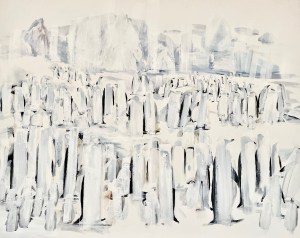
Devon-based artist Frances Gynn has a solo exhibition at the Velarde Gallery in Kingsbridge. Disappearing Marks is informed by environmental issues and humanity’s engagement with nature. Through drawings and paintings her practice reflects growing concerns over the effects of plastics in the ecosystem, and in particular deforestation and its influence on habitat loss and the decline of many precious species.
Frances graduated with a BA (Hons) in Fine Art from the University of Exeter in 2000. She has collaborated in numerous exhibitions and site-specific events and has been shortlisted for the Trinity Buoy Wharf Drawing Prize. She a member of the Royal West of England Academy.
Alongside her show is a complementary group exhibition Into the Light of Things, comprised of works that explore themes of human interaction with nature. Artists include ceramicist Paul Wearing, Susanna Bauer, Shannon Clegg and sculptor Jilly Sutton, who takes inspiration from the ancient woodlands on the banks of the River Dart in Devon. Also on show are ceramics by Joseph Dupré, calligraphy by Susie Leiper, sculptural willow by Sue Kirk and handcrafted furniture Andrew Dominic. Until January 6. velarde.co.uk
LOCALS LOVE
The Cookworthy Museum is named after local man William Cookworthy (1705-1780) who was the first the develop hard-paste porcelain to enable china to be produced. In the early 1970s, English China Clays were persuaded to invest in the derelict Old Grammar School building to create a museum to celebrate local history of Kingsbridge and the South Hams. One of the highlights is a collection of photographs from the 1870s to the present day. kingsbridgemuseum.org.uk
8. DYLAN’S HOME
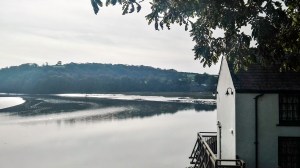
This year marks the 70th anniversary of the arrival of Dylan Thomas at the place that he made his home until his death at the age of 39. Dylan arrived in Laugharne with a friend by ferry from the other side of the Taf estuary and would have alighted just behind The Boathouse. He was instantly fascinated with Laugharne.
With his wife Caitlin they made a home in the village and in 1949 bought The Boathouse where they lived with their three children. A small garage just up the road from the chaos of family life became his writing shed. It was from The Boathouse that Dylan made the fateful journey to New York where he died in 1953.
Dylan’s family still have a very strong connection to the Boathouse. Aeronwy, Dylan’s only daughter, became an ambassador for his work as well as a fine writer herself. Since her untimely death in 2009 the mantle has passed to her daughter, Hannah Ellis, who is herself a regular visitor to The Boathouse with her family. This is a place the Thomas family still feel very much at home. Check website for opening. dylanthomasboathouse.com
LOCALS LOVE
Dylan Thomas loved Laugharne Castle and wrote Portrait of the Artist as a Young Dog in the castle summerhouse with views of the Taf estuary close to his home. There are two medieval stone towers, the remains of a Tudor mansion and 19th century ornamental gardens.
Laugharne was a ruin when Elizabethan courtier Sir John Perrot bought it, turning it into a grand residence. It didn’t end well when he was convicted of high treason. Sir John died in the Tower of London in 1592 while awaiting execution. Some believe he was poisoned just as Elizabeth – who may have been his half-sister – was about pardon him. Opens for the season on April 1. cadw.gov.wales
9. POWER OF THREE
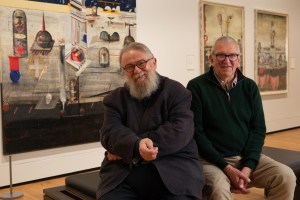
Arthur Watson, Lennox Dunbar (pictured) and Ian Howard are three of Scotland’s foremost artists. The Aberdeen-born contemporaries, born in the 1950s, attended Aberdeen Grammar School and were greatly influenced by visits to the city’s Art Gallery.
Their art teacher not only encouraged the trips, he also got the teenagers to write about what they saw on display. For this show, the three artists have chosen work from the gallery’s collections to be displayed alongside their own paintings and sculpture. The gallery – which has undergone a major refurbishment – is now the location for Constructed Narratives, an exhibition featuring work purchased for the gallery’s collection early in the three artists’ careers, alongside more recent examples. It not only features work by these significant figures but shows how, as artists and educators, they have influenced subsequent generations. Ends January 28. aberdeencity.gov.uk
LOCALS LOVE
In Seaton Park in the heart of Aberdeen is a medieval bridge that dates back to 1286. The Brig o’ Balgownie is made from the grey granite which is seen throughout the city in buildings and other structures. It consists of a single Gothic arch and the landmark has been celebrated in folklore and poetry, including a mention in Lord Byron’s epic poem Don Juan. The poet recalled crossing the bridge in his childhood. visitscotland.com
10. JOURNEY THROUGH TIME
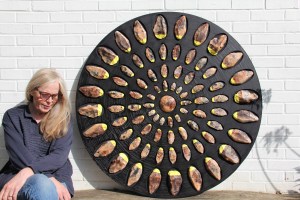
The temporary nature of human existence is explored through the archaeological traces left by man in a multimedia installation at Gosport Gallery, newly opened after a £1.4 million refurbishment of the Grade II listed former Grammar School. Unearthing is a new artwork installation by Surrey-based Mary Branson, best known for her large-scale conceptual light works and in particular for her sculpture New Dawn which is located at the entrance to St Stephen’s Hall in the Houses of Parliament.
The exhibition, commissioned by Hampshire Cultural Trust for Gosport Gallery, is a multimedia, immersive installation that combines archaeological finds with sound and light projections. At the core of the exhibition are hundreds of locally discovered archaeological artefacts in a dramatic, sculptural display that tells the story of man’s journey through time to the present day – The Age of Man, created in collaboration with the Gosport community.
The artist (pictured with The Age of Man) says that she wanted to look at the impact of the lockdown: “I wanted to explore this sense of a frozen period by using ancient archaeological artefacts to create an artwork that underscores the continuity of human history and the deep-rooted connections that we share with those who came before us.” Admission is free. Ends January 6. gosportmuseumandgallery.org.uk
LOCALS LOVE
Step back in time to the 17th century village of Little Woodham, surrounded by woodland. Immerse yourself in everyday rural life. You may meet the seamstress embroidering elaborate decorations on clothing for the wealthy members of the parish, weavers busily spinning wool or weaving beautiful cloths or see the potter at his wheel throwing pots or firing up his kiln. There’s a sawmill and a blacksmith’s forge. Seasonal opening. littlewoodham.org.uk
COMING SOON

Tickets are on sale for an impressive Eden Sessions double bill at the Eden Project in Cornwall this summer. Manic Street Preachers and Suede will co-headline at the St Austell venue – the second stop on their major joint UK and Ireland tour, commemorating 30 years since the iconic bands first took to the stage together.
Each band will play in front of the iconic Biomes for around 75 minutes, promising to deliver a musical experience of sounds that have left an indelible mark on the British music scene and earning each of them NME’s Godlike Genius Award.
It marks an Eden debut for Suede, led by original frontman Brett Anderson. With four UK number one albums and eight top ten hits, Suede are known for their compelling and provocative music, which has seen them play at multiple festivals around the world, including Coachella, Glastonbury, Reading and V Festival.
Manic Street Preachers (pictured) will be returning to the Sessions stage, having performed to a rapturous sell-out crowd in 2016. The Welsh indie pioneers have a horde of accolades under their belt from their 14 studio albums, with a 15th in the pipeline.
Boasting two UK number one singles and albums, the band has sold more than 10 million albums globally, earned 11 NME Awards, eight Q Awards and four BRIT Awards, and received nominations for the Mercury Music Prize and MTV Europe Music Awards. Hits include If You Tolerate This Your Children Will Be Next and Motorcycle Emptiness. June 29. edensessions.com

